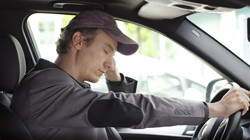Coming to the rescue of tired drivers
Road accidents and their consequences are a significant problem in Europe. In economic terms, these tragedies cost Europe between EUR 10 and 24 billion annually. Driver fatigue causes up to 35 % of the accidents, accounting for around 7 000 of the annual deaths. Thanks to the EU-funded 'Heart and respiration in-car embedded nonintrusive sensors' (HARKEN) project, a driver monitoring system was designed with biosensors built in to seatbelts and car seat fabrics. Relying on non-invasive body contact with the sensors, the system measures a driver's heart rate and respiration. HARKEN began by defining the system, including a review of best available current technologies and related publications. It measured the physiological parameters and devised noise filtration algorithms. The project designed a textile that is embedded in seat covers and belts to measure heart activity and respiration. This fabric is sensitive to the pressure exerted by the driver's body. This led to the development of the seat cover and safety belt that detect the physiological signs of the driver. Both contain the smart textile materials. A study of driver size and proportions was conducted to determine the best location for the sensors. A signal processing unit was also created, which gathers the signals of the two sensors and processes them based on the developed algorithms. Lastly, these three main system components were validated in a driving simulator and also tested on the streets. HARKEN introduced wearable devices that help to ensure a safe and comfortable driving experience while measuring the symptoms of drowsiness and fatigue. Outcomes should reduce car accidents in the near future, saving Europe about EUR 2 billion per year.
Keywords
Driver fatigue, road, sensors, biosigns, biosensors







